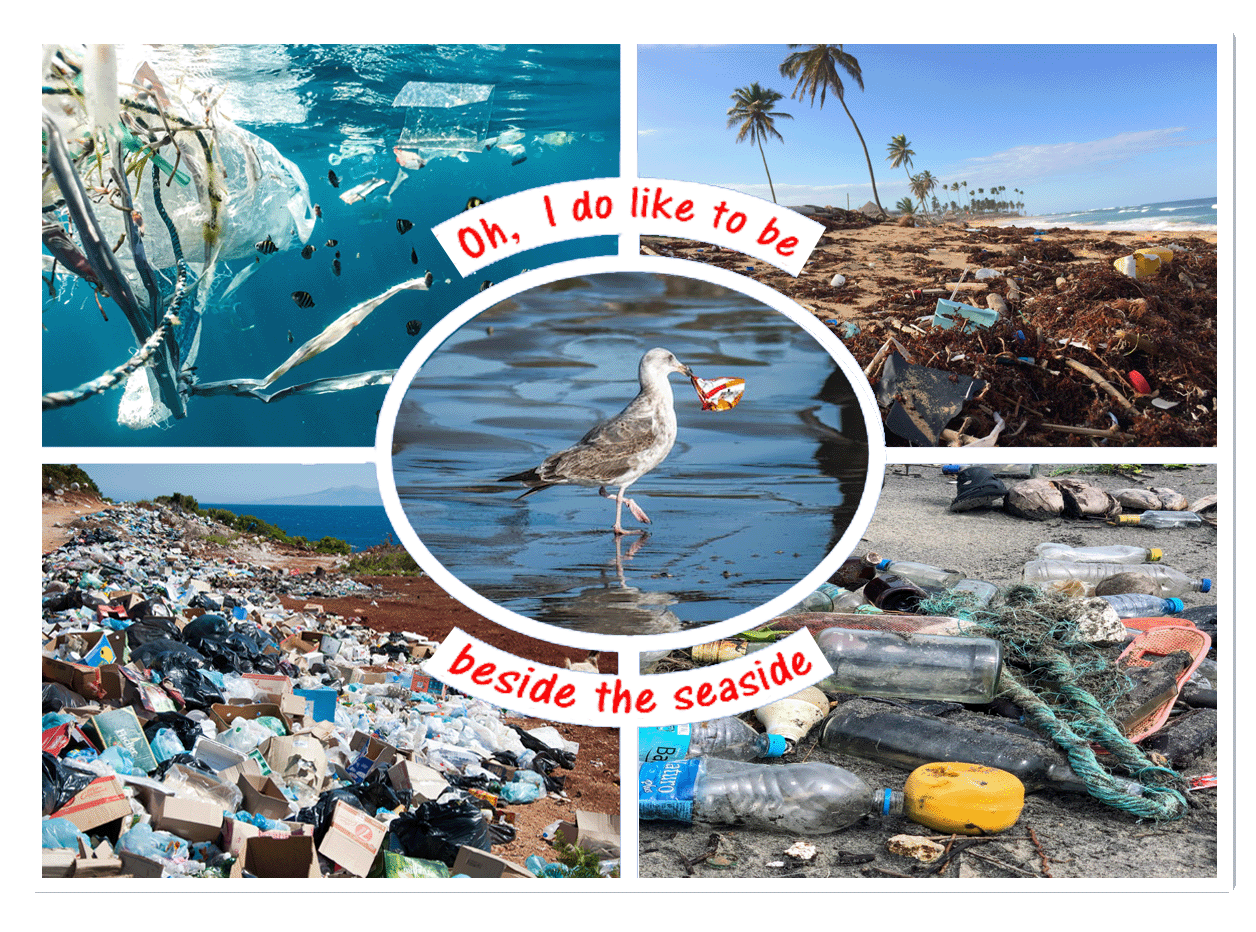
I met Kay Pike when she brought the Plastic Free Axminster stall to All Saints, a village on the outskirts of Axminster. Kay is keen to stress that she is no expert on the subject – I beg to differ. The more she talks – passionately – about the subject of single-use plastic, the more you want to know. I had a list of questions.
She explained that Plastic Free Communities comes under the umbrella of the marine charity Surfers Against Sewage and that there are about 850 communities in the UK, all at different stages of accreditation. Anyone who cares enough about the environment can apply for accreditation for their community. Axminster is one of those towns working towards this. To achieve the award, Kay told me that a steering group is first set up and the support of the local council needs to be sought and secured. The steering group then works with local businesses, schools, community groups and the townsfolk to encourage them to reduce their dependence on single-use plastic, and gathers evidence of such activities. Maybe you are wondering if there is a ‘Plastic Free’ town near you; if you click on the Plastic Free Communities website, you can check on its map of the UK. If there isn’t one, why not get the ball rolling yourself?
The steering group spreads the word about single-use plastic and suggests simple swaps to more sustainable items. It does this by taking displays to community events, giving talks, organising community litter picks and writing ‘eco tips’ for local parish newsletters and online newspapers – in fact, just remaining super aware of any opportunity to spread the word. Even while at our village event, a booking was secured. This was the second time Plastic Free Axminster had brought the display to All Saints; the table that day concentrated on cleaning products. Kay had assembled a group of ’bad guys’ (the ‘plastic guys’) together with the alternative ’good guys’ (she called them the ‘natural guys’).
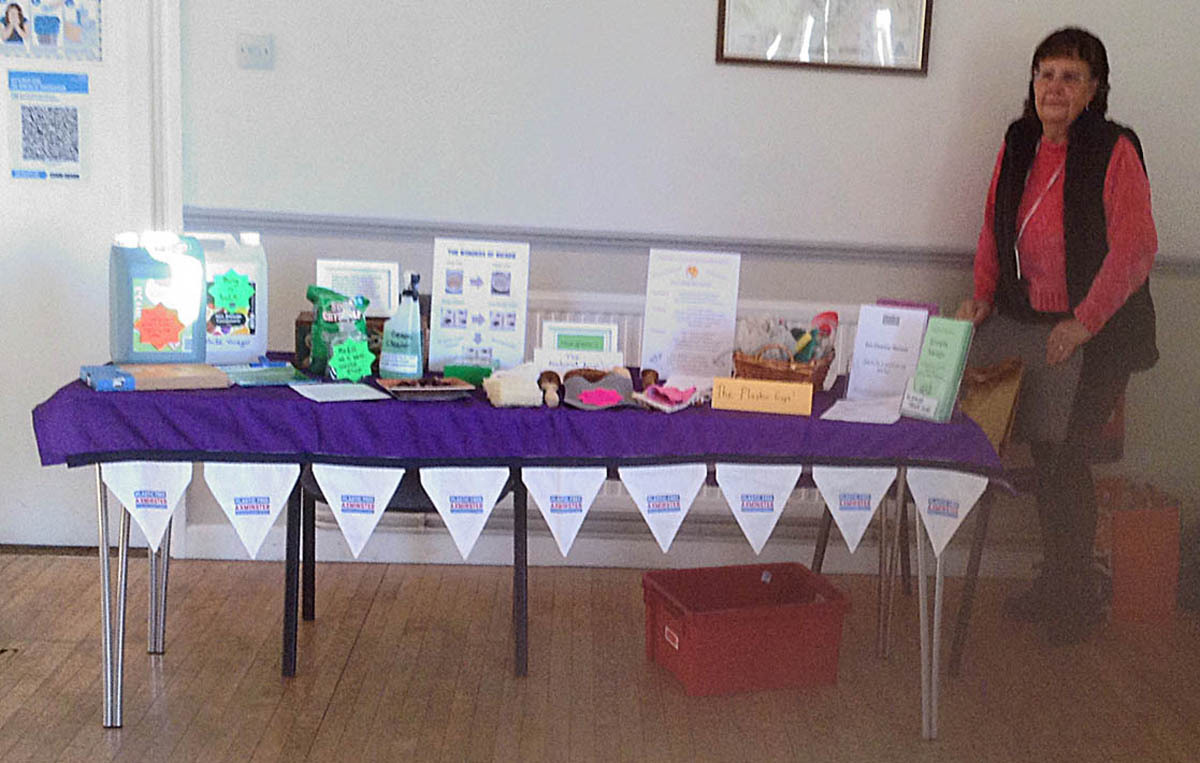
For instance, green scourers, synthetic sponges and microfibre cloths are sold by the million, but they contain plastic, and every time they are used tiny plastic fibres escape into the drains and waterways. You could instead try using a loofah (maybe have a go at growing your own) or, for more intensive cleaning, there are brushes and scourers made from coconut fibres or bamboo. Dishcloths too can often contain plastic but there are eco alternatives, such as cotton ones – have a go at knitting your own with the special cotton available. One alternative on display was a Scandi dishcloth, made by the Swedes from 70 per cent wood pulp and 30 per cent cotton waste – zero plastic, re-usable, biodegradable, compostable, machine washable. What’s not to like?
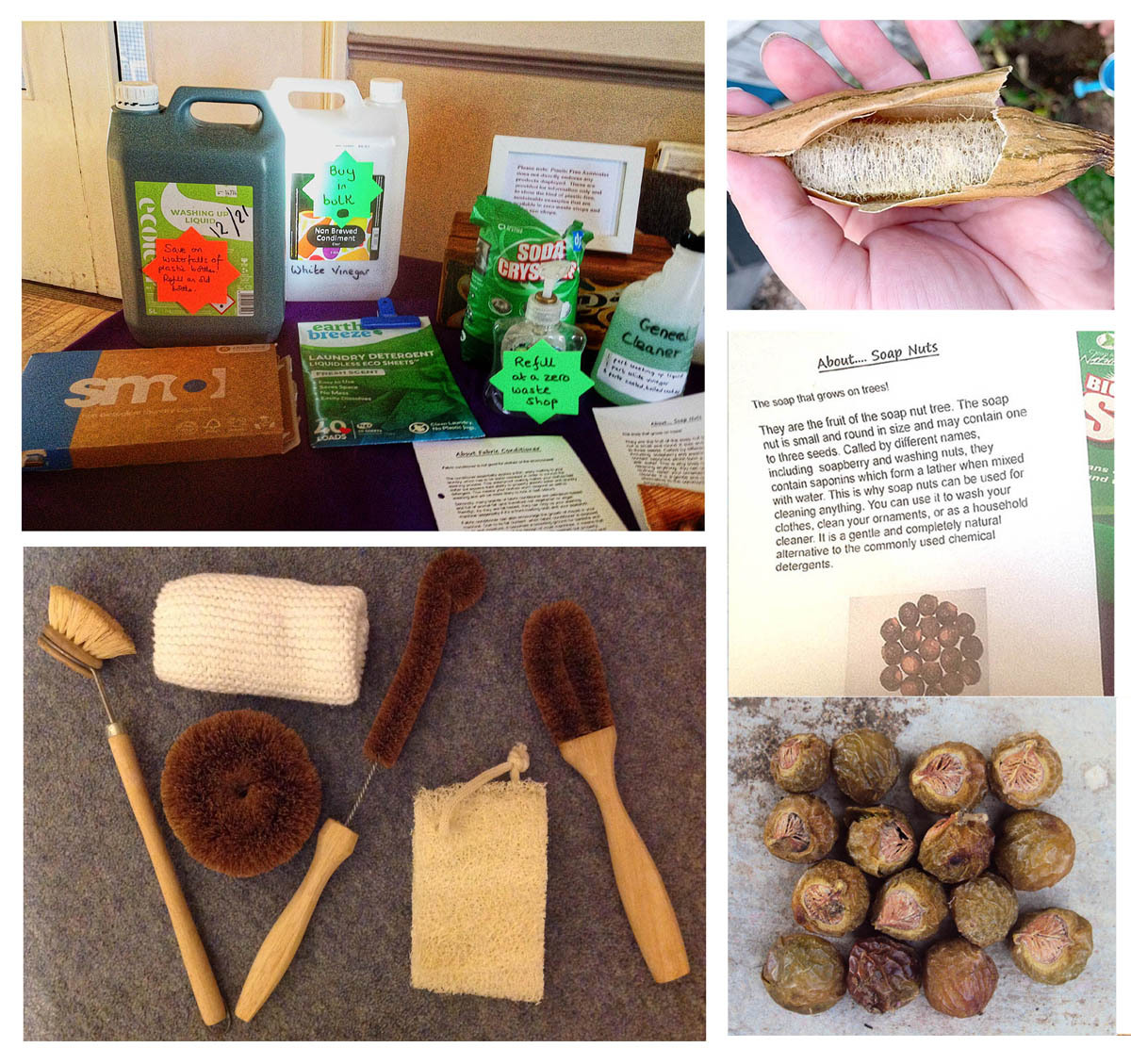
Now for all those liquids …
Have you ever heard of Parabens, Triclosan, Phthalates? No? Neither had I. It was a real eye opener to read the poster listing these chemical ‘ingredients’ and to find out how they can adversely affect our health. Studies have shown that they can disrupt hormones, contribute to cancer and cause skin irritation. And guess what – not only are they included in many cleaning products, but they are also found in shampoos, deodorants, cosmetics, toothpastes, mouthwashes … to name but a few.
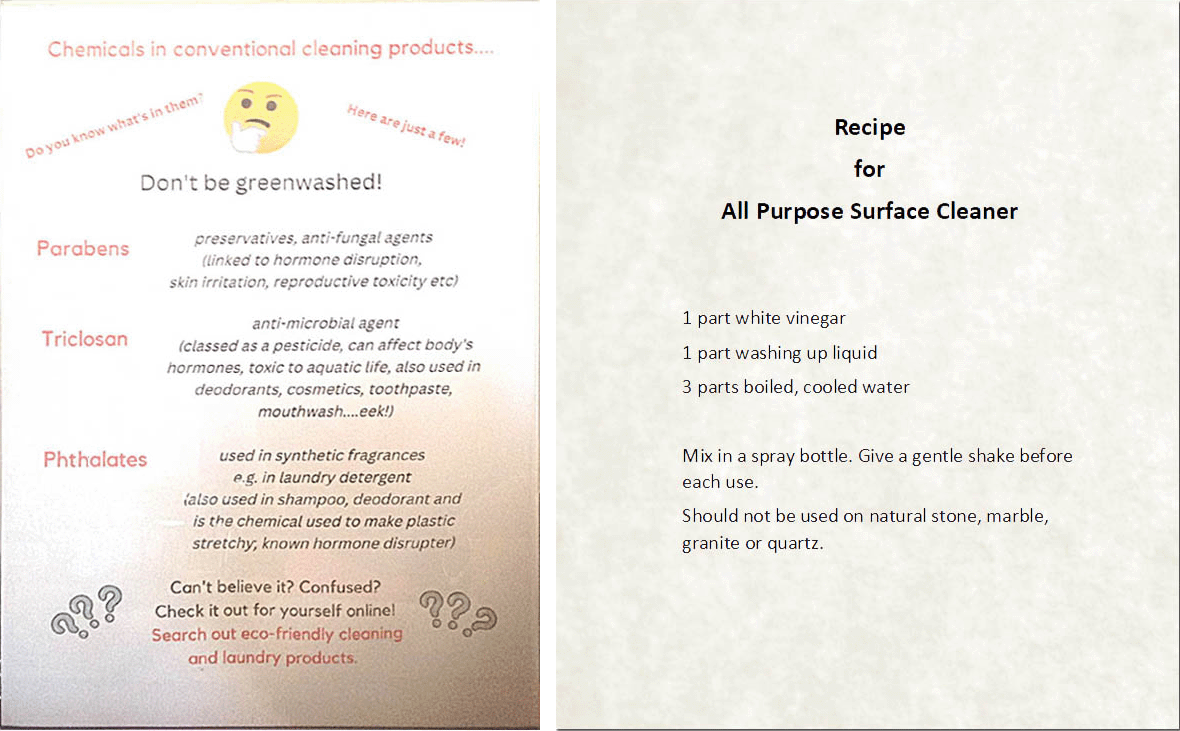
Plastic Free Axminster has produced a leaflet of Eco Cleaning Recipes and it seems that all we really need for cleaning are bicarbonate of soda, white vinegar and soda crystals. White vinegar, in particular, as used by our forefathers, is so versatile – it is a natural disinfectant, biodegradable, vegan, hypoallergenic, non-toxic and removes limescale; moreover it’s dirt cheap!
Try white vinegar in the rinse aid compartment of the dishwasher and in the fabric conditioner compartment of the washing machine. Fabric conditioner is bad for the environment, bad for your health and even bad for your clothes! Kay says she hasn’t used any for a long time and that clothes are just fine without it.
Talking of recipes, visitors to the stall were keen to share tips, and one lady swore by Nancy Birtwhistle’s Clean & Green, a book full of recipes and ideas for eco-friendly cleaning. Once you start researching it on the web, you will find many other books on the same subject. However, if you really feel there is no alternative to using a liquid that comes in a plastic bottle, you could at least save your empty bottles and find out where your local ‘refill station’ is – Plastic Free Axminster has a list of those in their town. Join what is termed the ‘Refill Revolution’ and save on all those plastic bottles and chemicals.
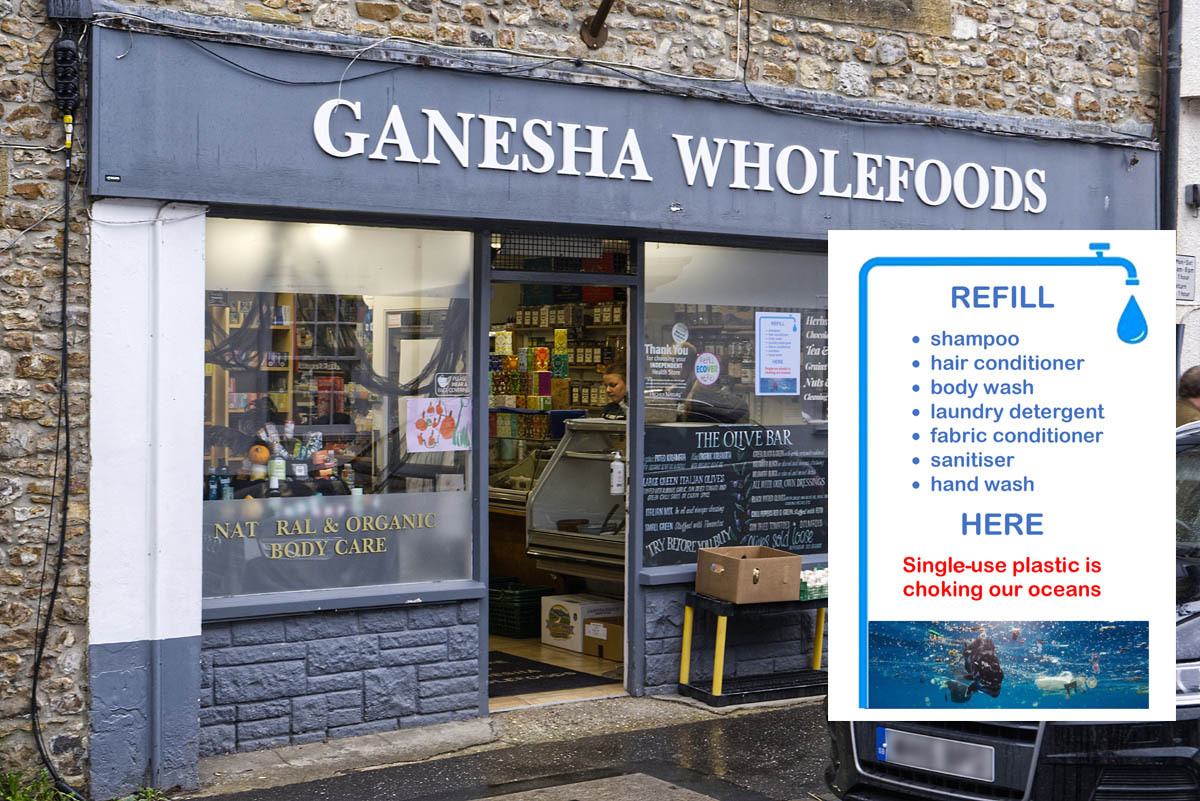
The articles that Plastic Free Axminster publishes in community newsletters are kept short and concentrate on one subject at a time. The latest piece for the All Saints Newsletter is about shampoo, and another for the local village of Kilmington is on toothpaste – spelling out what is wrong with both the container and its contents. Plastic Free Axminster is happy for us to share the articles, so keep watching this space!
And finally, visitors were invited to have a crack at a quiz. There were ten questions about plastic and recycling, and I can honestly say that I could answer only two of them with 100 per cent confidence. Spoiler: the answers are even more interesting than the questions. Here is a taster: What do you think this symbol means?

While it is acknowledged that a ‘Plastic Free Community’ cannot ever live up to its name in absolutely literal terms, in striving towards that objective at least we will use less single-use plastic, create awareness in others and, hopefully, influence manufacturers. But let us never forget why we are doing this:
- Microplastics have been found in breast milk;
- Microplastics have been found in human lungs, liver, spleen and kidney;
- Fish feeding on particles of plastic are starving to death before they can reproduce;
- A dead whale was found to have 1,000 plastic items in its stomach, including flip-flops, bottles, bags and 115 drinking cups;
- In excess of one garbage truck-load of plastic is being dumped in our oceans every minute of every day, 24/7 – Think about that. Just THINK about it! This is SO unsustainable;
- Want to see a picture of a seagull feeding its chick a cigarette butt? Click this link.
And the answer to the quiz question – no, not ‘recyclable’; it signifies that “the producer has made a financial contribution towards the recovery and recycling of packaging”. But what exactly does that mean?




